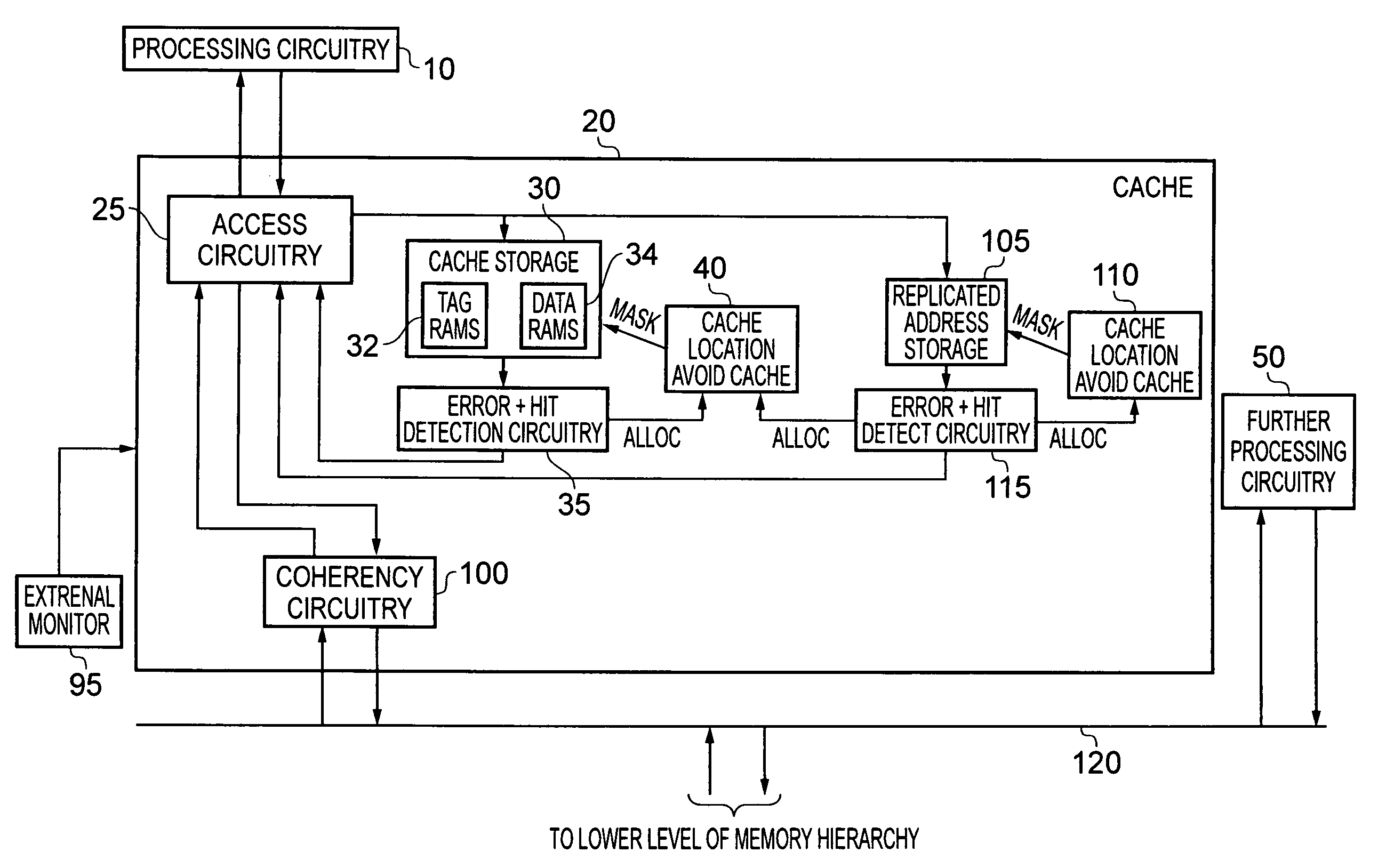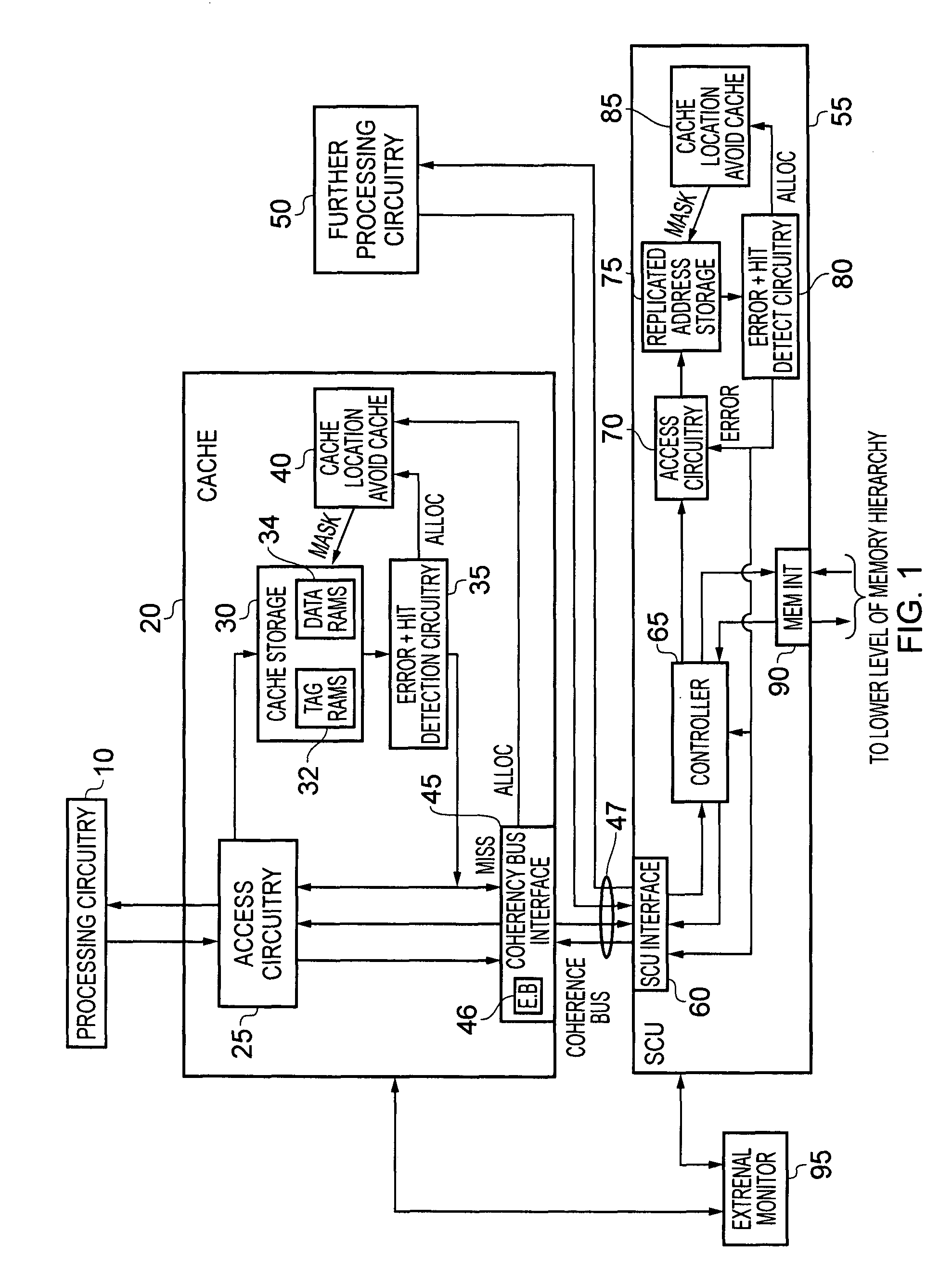Handling of errors in a data processing apparatus having a cache storage and a replicated address storage
a data processing apparatus and cache storage technology, applied in the direction of non-redundant fault processing, transmission, transmission systems, etc., can solve the problems of error which can occur, error that cannot be corrected, storage devices within the data processing apparatus are vulnerable to errors, etc., to improve system reliability, improve the use of records, and reduce power consumption
- Summary
- Abstract
- Description
- Claims
- Application Information
AI Technical Summary
Benefits of technology
Problems solved by technology
Method used
Image
Examples
Embodiment Construction
[0076]FIG. 1 is a block diagram of a data processing apparatus in accordance with a first embodiment. Processing circuitry 10, which in one embodiment may take the form of a processor core, is coupled to its own local cache 20, which in turn interfaces with one or more lower levels of the memory hierarchy (which may include one or more further caches) via a coherency bus 47 and a snoop control unit (SCU) 55. The processing circuitry 10 during operation will issue various access requests seeking to access data values from memory. If those data values are located within the cache 20, they will typically be accessed in the cache avoiding the time penalty of having to access any of the further levels of the memory hierarchy.
[0077]The processing circuitry may have access to a unified cache provided for instructions and data, or alternatively may have access to a separate instruction cache for storing instructions for access by the processing circuitry, and a further separate data cache f...
PUM
 Login to View More
Login to View More Abstract
Description
Claims
Application Information
 Login to View More
Login to View More - R&D
- Intellectual Property
- Life Sciences
- Materials
- Tech Scout
- Unparalleled Data Quality
- Higher Quality Content
- 60% Fewer Hallucinations
Browse by: Latest US Patents, China's latest patents, Technical Efficacy Thesaurus, Application Domain, Technology Topic, Popular Technical Reports.
© 2025 PatSnap. All rights reserved.Legal|Privacy policy|Modern Slavery Act Transparency Statement|Sitemap|About US| Contact US: help@patsnap.com



